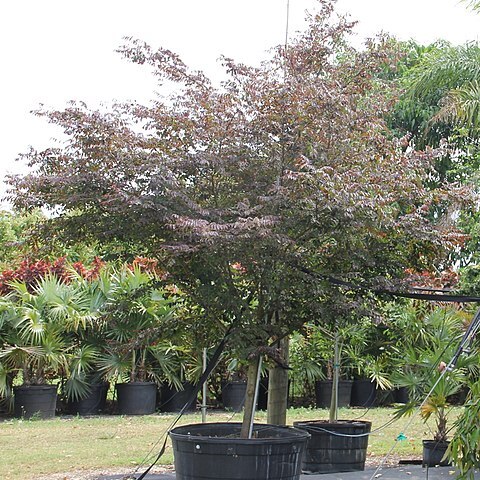Shrub to 4 m high, glabrous. Stipules narrowly triangular, 1–1.6 mm long, green. Branchlet leaves: petiole 2.5–6 mm long; lamina ovate, 19–90 mm long, 12–44 mm wide, obtuse, acute or acuminate, slightly discolorous. Inflorescences unisexual, females distal. Male flowers 1–3 per fascicle; pedicels 2.5–5.8 mm long; perianth ± campanulate; tube 2.3–3.5 mm long, truncate or obscurely lobed; scales exserted, acute; androphore slightly exserted. Female flowers 1 (rarely 2) per inflorescence; pedicels 1–2.3 mm long, elongating up to 7 mm in fruit; perianth obconical or narrowly campanulate, 1.2–1.6 mm diam.; tube 1.4–1.8 mm long; lobes triangular, c. 0.5 mm long, acute; ovary narrowly ellipsoid, c. 1 mm diam., sometimes apically elongate, exserted. Fruit subglobose, 4.5–7 mm diam., sometimes beaked, red; fruiting pedicels 2.6–5 mm long; fruiting perianth discoid, 3–3.8 mm diam., green. Seeds 4–4.7 mm long, pale brown–grey.
Shrub or tree to 6 m high, glabrous. Stipules triangular, 0.8–1.5 mm long, green. Branchlet leaves: petiole 3.8–6.3 mm long; lamina ovate, rarely elliptic, 15–100 mm long, 10–47 mm wide, obtuse, sometimes emarginate, discolorous. Male flowers 2–5 per fascicle; perianth obconical; tube c. 2 mm long, truncate; scales exserted, obtuse; androphore exserted. Female flowers 1 or 2 (–3) per cluster; perianth ±obconical, 1–1.3 mm diam.; tube 1.5–2 mm long, truncate or lobes to 1.2 mm long, obtuse or acute; ovary narrowly ovoid or ellipsoid, c. 0.6 mm diam., exserted. Fruit ellipsoid or subglobose, 5.5–9 mm diam., sometimes centrally depressed or beaked, glabrous, white, yellow or pink; fruiting pedicels to 5.5 mm long; fruiting perianth discoid, 5.2–7 mm diam., green. Seeds 3.6–4.6 mm long, grey-brown.
A shrub. It grows 1-2 m tall. The leaves are arranged along a twig to make them look like a compound leaf. The leaves are 25-40 cm long by 15-23 mm wide. The male flowers form a column in the centre of the flower. The fruit are 5-8 mm across.


